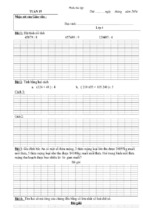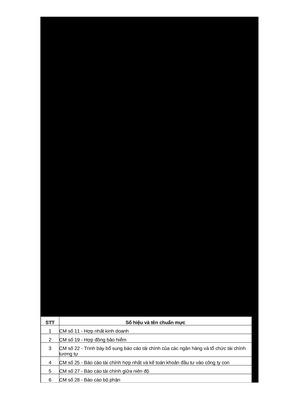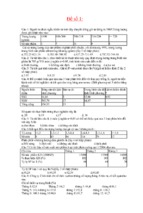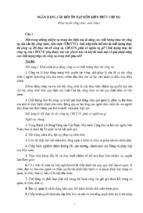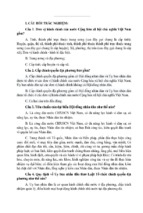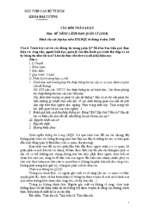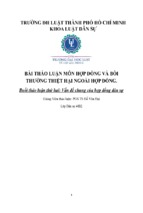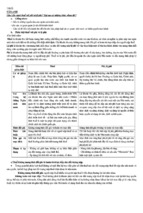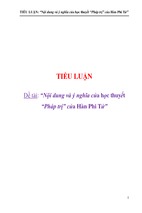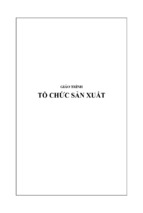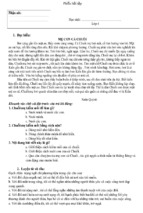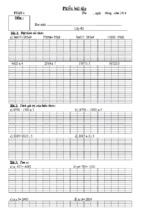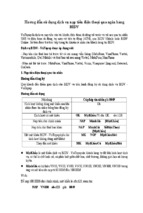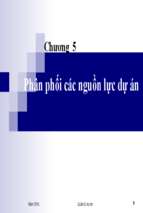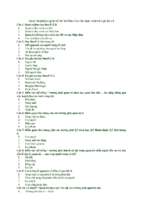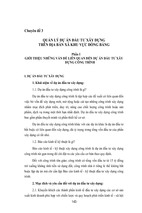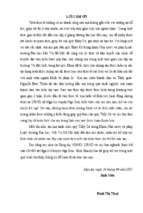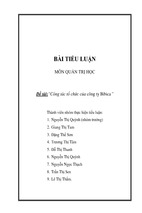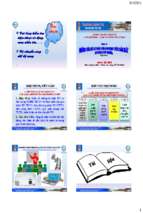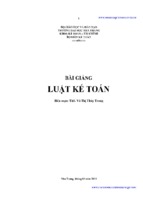College of Asia and the Pacific
Crawford School of Public Policy
Academic and Research Skills
Handbook
A collection of resources for Crawford coursework students
compiled by
Crawford Academic and Research Skills Advisors
Table of Contents
1.
The critical approach ............................................................................................. 3
2.
Time management ................................................................................................. 7
3.
Academic reading .................................................................................................. 8
4.
Note taking .......................................................................................................... 11
5.
Writing a summary .............................................................................................. 16
6.
Academic writing ................................................................................................ 19
7.
Essay writing process .......................................................................................... 28
8.
Analysing the question ........................................................................................ 31
9.
Finding and evaluating sources ........................................................................... 34
10.
Constructing an academic argument.................................................................... 37
11.
Writing paragraphs .............................................................................................. 41
12.
Writing a critical review ...................................................................................... 42
13.
Writing a quantitative paper ................................................................................ 46
14.
Oral presentations ................................................................................................ 50
15.
Examinations ....................................................................................................... 54
16.
Academic honesty and plagiarism ....................................................................... 58
17.
Turnitin ................................................................................................................ 59
Appendices ..................................................................................................................... 60
Glossary of critical thinking terms ................................................................................. 60
Brainstorm template ....................................................................................................... 64
Argument mapping ......................................................................................................... 65
Reporting verbs .............................................................................................................. 66
Transitions / Signpost expressions ................................................................................. 69
Sample Critical Review .................................................................................................. 71
Sample essay .................................................................................................................. 76
Assignment criteria & checklist ..................................................................................... 79
Editing Checklist ............................................................................................................ 81
ANU Grade Descriptors ................................................................................................. 83
Academic Skills resources online ................................................................................... 84
English expression and grammar online......................................................................... 85
i
Welcome
Welcome to the Crawford School.
While doing your degree at the Crawford School, you will obtain a great deal of academic
knowledge. It is, however, often difficult to make an adjustment to thinking and communicating
in an academically effective manner.
This handbook will introduce you to the most important skills required for academic success. In
particular, it will focus on:
•
•
•
•
•
•
critical thinking
reading and evaluating sources
analysing assignment topics
effective planning and writing techniques
referencing skills
time management
With a solid grasp of these skills, you can feel confident that you will succeed in an academic
environment.
Crawford Academic and Research Skills
January 2015.
1
Crawford Academic and Research Skills Advisors
Crawford Academic and Research Skills Advisors support Crawford students through:
•
•
•
•
Graduate Pre Sessional Program – January and June
Induction Program – February and July
Weekly workshops during teaching periods
Individual consultations
Workshops
An Academic and Research Skills Workshop schedule is posted at the beginning of each
semester. We can help with issues including;
•
•
•
•
•
•
•
•
•
Time management
Understanding the assignment task
Making essay plans/outlines
Constructing arguments and using evidence
Writing the first draft
Applying the appropriate referencing style
Preparing for and performance during examinations
Preparing oral presentations
Addressing any other concerns about academic progress
Individual consultations
To discuss your assignment with a Crawford Academic and Research Skills Advisor, book a
consultation at: https://crawfordacademicskills.tymwise.com/#.
Christine Adams
E:
[email protected]
T: 6125 3877
Room: 2.15
Mark Badger
E:
[email protected]
T: 6125 2318
Room: 2.04
Anne Patching
E:
[email protected]
T: 6125 6554
Room: 2.08
2
1. The critical approach
The role of critical evaluation
The work of academics is to:
1. Generate new knowledge in their discipline through original research. This involves
analysing problems and synthesising existing findings in relationship to current
theories, gathering new evidence through good research methodology, interpreting the
results in order to draw conclusions, integrating those conclusions with what is already
known about the subject and so contributing to the discipline knowledge. New
knowledge is stored as a conclusion based on one or more arguments which link the
conclusion to evidence or to other well-accepted conclusions.
2. Test other researchers’ contributions to new knowledge for soundness and plausibility
(the process of peer review).
Critical evaluation is involved in both processes. Critical evaluation is the core of academic
work. While only research students generate new knowledge, all students are expected to
critically evaluate sources while reading and writing assignments. Although coursework
students are thus involved only in the second phase, critical evaluation is thus still the core skill
of their academic work.
The aim of academic work is to create true generalisations — principles, theories, models, and
claims - based on arguments that use good evidence.
However, all knowledge is provisional and is constantly revised in the light of new information
or clearer thinking. Academics also have different opinions on what is true, usually because they
give different weight to the evidence, but sometimes because they have a different ideology or
values. You will rarely be set an assignment on a topic where there is no controversy and debate
among academic authors.
Therefore, the main question in academic work is ‘How do I know whether a particular piece of
information is true or valid?’
Testing the truth of each statement is the main critical evaluation of the idea. However, ideas
must be more than just accurate to receive much attention in the academic world, they must also
be important, so the significance of an idea is also likely to be evaluated.
The attitude of questioning
It takes courage and confidence to question published authors, especially when you are just
beginning to study a subject; however, that is what is required. No research is perfect, even the
best work will be limited and have weaknesses, and will raise more questions than it answers.
3
So try to develop a questioning attitude and check each author’s work. Such questioning is
judged to be fair dealing, and is expected and encouraged. Approach critical evaluation as a
brainstorming exercise to assess whether the conclusion is true. The following sections are
intended to help you to systematically test a source and so evaluate the quality of the research.
What is involved in critical evaluation?
A lot of researching, reading, and thinking is required for academic work. Thinking involves
comparing, sorting, and relating information from different sources. It is like putting together a
jigsaw puzzle, relating individual pieces of information in order to see the whole picture.
Bloom’s taxonomy of cognitive (thinking) objectives, shown on the next page, gives a
cumulative hierarchical list of thinking skills — cumulative and hierarchical because the later,
higher items include doing the items below them.
In Bloom’s taxonomy, evaluation is the highest category, so to evaluate you need to also know
and understand information, be able to apply it to new situations, and analyse and synthesise it.
The categories become increasingly difficult — the higher it is in the hierarchy, the harder it is
(although the level of an activity depends partly on the level of originality, so remembering a
definition is level 1 knowledge, formulating a novel definition is at least level 4, analysis, but,
for a complex concept, could be level 6, evaluation, if it involves deciding criteria and
judgement).
Bloom’s taxonomy can be applied to the process of writing an essay or report and to the
evaluation of your own writing. As evaluation is the highest level of thinking and as
postgraduates are expected to critically evaluate, you will be involved in all six levels of the
taxonomy on every assignment.
Source: http://www.bized.co.uk/reference/studyskills/essay.htm
4
Bloom’s taxonomy of cognitive skills
Competence
Examples of skills demonstrated
1. Knowledge
•
•
•
•
acquiring information and recalling it when needed
remembering dates, events, places
knowing definitions, concepts, theories, examples, evidence
cue words: define, describe, identify, label, list, name, quote, recognise,
tell, who, what, when, where, etc.
2. Comprehension
•
understanding, and interpreting information, including the relationship of
parts
translating knowledge from one form into another
extrapolating trends
distinguishing warranted, unwarranted and contradicted conclusions
from data
cue words: associate, describe, differentiate, discuss, distinguish,
estimate, explain, extrapolate, interpolate, identify examples, interpret,
summarise.
•
•
•
•
3. Application
4. Analysis
•
•
•
•
•
using learned information in a new situation without prompting
recognising problem types and the knowledge required for solutions
using information and skills in new contexts
solving problems using learnt skills and knowledge
cue words: apply, calculate, classify, complete, demonstrate, estimate,
illustrate, show, solve, modify, relate, change
•
breaking down information into its component parts and identifying the
relationship of each part to the whole
seeing patterns in the information
identifing the component aspects of a topic
recognising and explaining relationships
comparing and contrasting aspects of topics
recognising implicit meanings (e.g. assumptions, values)
recognising the structure of a text or of information
devising categories
cue words: analyse, separate, order, explain, connect, classify, arrange,
divide, compare, select, explain, infer, contrast
•
•
•
•
•
•
•
•
5. Synthesis
•
•
•
•
•
•
•
•
•
•
combining existing elements in order to create something original
distinguishing relevant from irrelevant material
infering generalisations from given facts or data
integrating knowledge from several sources or disciplines
predicting consequences
using analogies to create new ideas
drawing novel conclusions
detecting logical fallacies in argument
justifying conclusions or recommendations
cue words: combine, compose, create, design, explain, formulate,
generalise, infer, integrate, invent, modify, plan, predict, prepare,
rearrange, speculate
5
6. Evaluation
•
•
•
•
•
•
•
•
•
judging the value of something by using a standard or criteria
discriminating between ideas, based on criteria
recognising subjectivity or bias
using reasoned argument to make decisions
assessing methodology and evidence
judging the worth of theories, solutions
identifying implicit values
developing criteria
cue words: assess, compare, conclude, convince, decide, discriminate,
grade, judge, justify, rank, recommend, select, summarise, support
6
2. Time management
Managing your time is not as easy as it sounds. Not only do you need to make sure that you
have all of your assignments completed on time, you also need to break down the process of
completing an assignment, and make sure that you do not spend more or less time than you need
to on any one aspect.
How long do you think it would take to complete an assignment, from when you first read the
question to when you hand in the printed document? What tasks do you need to consider? Here
are some suggested tasks:
•
•
•
•
•
•
•
•
analysing the topic — what does your lecturer want from you in this assignment?
finding and evaluating useful sources
reading and taking notes
working out your thesis statement and argument
planning your essay
writing the first draft
rewriting and editing
proof-reading.
Writing an assignment is not a simple process where you perform all these tasks in any strict
order. You should be thinking about your argument, and revising and re-working it in the light
of your reading, all the way through working on an assignment. Likewise, look for useful
sources of information that can provide you with evidence for your argument, or explain
complex information in a simple way so that you understand your topic better.
Nevertheless, you need to plan to devote time to each of these tasks, so that you have some
control over your study! We run Time Management workshops in the second week of each
semester to give you practical strategies to manage your time effectively during your studies at
Crawford. Don’t miss these workshops!
7
3. Academic reading
Introduction
Crucial to the critical approach is the idea of being informed, that is, we test the claims of others
and develop our own opinions based on information and evidence. It is important to know what
other people have thought and are thinking about a topic that you intend to address. To not be
well informed means that you will not be expressing a reasoned opinion, you will merely be
opinionated.
Whilst lectures, videos and conversations are all sources of information that you can use to
develop your opinions, the most common way of acquiring information is by reading — reading
journal articles, books, websites, newspapers and a range of other sources.
Reading for information is, however, different from reading for pleasure.
Reading for information
Academic reading is a process of acquiring useful information: it is more like an interview than
a relaxed chat — you are actively seeking the information that you want, not passively listening
for any information that they have to give you. You need to interrogate your sources as
efficiently as possible, so think about adopting these strategies.
Scan first, read details later
•
Start with the part of the text that is going to give you the most information, usually
the abstract, the introduction or the conclusion. Find out what the authors’ main
point is—you should be able to write down their main point in a short sentence.
•
Pay attention to headings or, if there are no headings, the first sentences of each
paragraph. These should help you to grasp what points the author is covering in
order to develop an argument supporting their main point.
Take notes
•
•
•
•
Write down the full bibliographic details of your source — author, date, title (and
any subtitles), publisher, place of publication
Jot down key ideas and short quotes — record the page number
Write a concise summary of the document, including the thesis statement and key
supporting points
Write your thoughts about the author’s thesis statement and article.
8
Resist the urge to read slowly
• There are times you need to engage with an author’s argument in detail, and that involves a
careful reading of what they have written. Most of the time when researching an essay,
however, all you need is the bare bones of their argument. Get the information and go!
• If you find yourself getting slowed down by data, statistics or jargon, look for the point that
the author is trying to make, and then move on.
You should be able to quickly and accurately skim read and take notes on a journal article
in less an hour.
Reading strategies
1.
Ask ‘What is my purpose in reading this?’ ‘What do I need to find out?’ Your
purpose will decide the reading strategy you will use (reading for overview,
reading for specific information, reading for critical evaluation, reading for
synthesis and judgement).
2.
Try to activate any knowledge you may already have about the topic of the text so
that you can relate what you read to previous knowledge.
3.
Browse for an overview. Look at the main title, headings and subheadings,
diagrams, tables, and any other illustrations. What is the text about?
4.
Read the summary, the abstract, the introduction and the conclusion.
5.
Try to work out how the writer has organised the text and the ideas. For example,
the text, or parts of the text, may be organised chronologically or in some other
form of listing, or the organisation may follow a problem and solution, compare
and contrast or cause and effect pattern.
6.
As you read, keep stopping and asking yourself questions:
•
•
•
•
•
‘Have I read this before?’
‘Do I agree with this idea?’
‘What have I read so far?’
‘Do I need to read any more?’
‘What do other authors say about this?’
7.
When you have finished a section or the whole article / chapter, write down the
important points.
8.
If you cannot do this, re-read the parts that you could not remember.
9.
Decide whether you need to make notes and if so, what notes you should take and
what form of note-taking to use. It is not usually a good idea to take notes on your
9
first reading before you know what the author is trying to argue. It is also advisable
to take your notes in pencil, so that you can modify them easily as your
understanding of the text grows.
10. Note down the full bibliographic details of the reference first.
11. As you take notes, add your personal comments on the ideas (but clearly identified
as your ideas and not the author’s – use a different pen or write them in a separate
column).
12. Finally, ask ‘Should I follow up on any of this author’s references?’ Should I see if
they have been cited by a later author? ‘Is there anything that I still don’t
understand?’ If so, ‘Do I need to seek some help, or is it not important?’
Principles to remember
You often do not need to read the whole text intensively. The author’s purpose in writing and
your purpose in reading are usually different. Skim read and decide which parts are relevant.
Read only those.
Try to use the context to work out the meaning of words which you do not know. Stopping to
look up words in a dictionary can disrupt the flow in your understanding of the text.
Make your own glossary of technical terms as you go. This helps you to learn the terminology
and builds a resource for future reading in the area. It also tests your understanding.
Reading is an active process. The best readers constantly ask questions about what they are
reading and try to relate the information to what they already know.
If you cannot understand a text, it is usually because you do not have the background
knowledge which is assumed by the author. Go and read about the topic in a textbook, an
encyclopaedia entry or a popular introduction such as can be found on the internet to obtain the
necessary background. Note, however, that you cannot cite these sources as references, because
although they are helpful in getting you oriented, they are usually too general to support an
argument.
Discussion with other students usually helps to improve understanding of a text and is
particularly helpful when you are experiencing difficulty with a text.
10
4. Note taking
Note taking from lectures
Why do you take notes?
•
•
•
Notes are an aid to help you sort and recall information
Notes are the raw material your work will be based on
Note-taking forces you to select points relevant to your purpose.
How do you take notes?
•
•
•
Recognise what is important
Reduce the important points to note form
Show how the important points are linked.
Guidelines
•
•
•
Use abbreviations and symbols to speed up your note taking
Do not crowd your notes. Leave space around them.
Make main points stand out by:
o Underlining and numbering them
o Indenting lower level details
o Leaving space between each point.
Before the lecture
During the lecture
After the lecture
Revise the previous
lecture/tutorial
Be on time
Sit near the front
Do the pre-reading
Distinguish between main points
& details: examples, repetition,
‘waffle’
Listen for structural cues –
signpost/transition words,
introduction, body, and summary
stages
Look for non-verbal cues – facial
expressions, hand and body
signals
Look for visual cues – eg
PowerPoint, Doc camera,
whiteboard
Listen for phonological cues –
voice change in volume, speed,
emotion
Review/write up lecture notes
on your computer the same
day.
Write a paragraph summary of
the lecture in your own words
Check pronunciation of new
words or discipline specific
language in pre-readings
To save time rule up pages
according to your note taking
system
Give each page a heading,
date, page number and name
of lecturer
11
Attach handouts to lecture
notes
Store notes in subject folders
Note taking from academic readings
Model 1 Classic
Complete bibliographic details for a book: Author’s name, year of publication, full book
title/chapter title, name of publisher, place of publication, page numbers.
Complete bibliographic details for a journal article: Author’s name, year of publication, full
journal article title, volume, number/series/issue, page numbers.
Introduction & Argument
•
…
•
…
•
…
Body/Evidence
•
…
•
…
•
…
Conclusion
•
…
•
…
•
…
12
Model 2 Cornell note taking
Complete bibliographic details:
Cue column
Note taking Column
(1)
(2)
Summary
(3)
13
Model 3 Linear notes
General tips
•
•
Read & listen critically
o
Is it important?
o
Is it relevant?
o
Is it credible?
Facts/Opinions/Examples
o
Note facts & opinions
o
Avoid ‘their’ examples
•
Summarise lecture/reading – not word for word
•
Use shortcuts when writing
•
Change font/colour/size for important parts
•
Write clearly
•
Be critical
o
Compare with other knowledge
o
Look for logical flow
o
Look for gaps in argument
o
What is missing in argument or understanding?
Notes as a study tool – why they help
•
Part of learning process
•
Extends attention span
•
Remember what you have learnt
•
Helps organise ideas
Use visual tools
•
Linear notes
•
Spray-type diagrams
14
Store and organise
•
Use large pieces of paper with margins
•
Organise – folders and filing system
Taking notes from lectures
•
Prepare for the lecture
•
Use tape/buddy + good note taking
•
Look for organisation clues from lecturer
Taking notes from readings
Know what you want from the reading
•
Look for organisation clues from headings, sections, paragraphs
•
Don’t write down examples
•
SQ3R Approach
o
Survey – flip through & layout
o
Question – structure and relevance
o
Read – twice through quickly
o
Recall – main points, facts & bibliog. details
o
Review – repeat steps & relate to task
Adapted from :
.
15
5. Writing a summary
Definition of a summary
A summary is a brief restatement of the contents of an essay, chapter, book, article, lecture, or
any other text. It may be very short (even just one sentence, expressing the core idea) or quite
long (say 300-400 words). A summary focuses on the central idea of the text, and excludes
minor details. A longer summary may reflect the structure of the original writing, but should not
include your own opinions — it is not a critique.
The point of a summary is to reflect the argument made by the author, either for someone else’s
evaluation or to assist your own memory.
Purposes of summaries
A good summary should:
• help your comprehension of the text
• be an aid to study
• sharpen your reading as well as writing skills
• provide background information when preparing to write a paper based on research
• help distinguish between major and minor points, and between specifics and generalisations
• show that you understand the whole text
• condense information to fit into short essays and reviews.
The process of writing good summaries
• Preview the text: scan headings, sub-headings and any words printed in bold type. These are
clues to the main points, and also indicate the structure of the paper.
• Read the introduction and conclusion. Skim the topic sentences of each paragraph in the
body text.
• Read the text through completely at least once before you write anything down or make any
marks on the paper. You need to get a clear idea of the author’s main idea first.
• Begin writing your summary with a short statement of the author’s main argument. Then
write down the major ideas that lead up to the author’s main idea or argument, and identify
how they relate to that main argument. (Sometimes a diagram will help you understand these
relationships better.)
• Finally, turn your notes and incomplete sentences into proper sentences and paragraphs.
16

